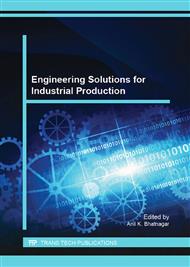p.176
p.180
p.185
p.191
p.197
p.204
p.209
p.214
p.219
Residual Stress Measurement in Inorganic Phosphate Adhesive Joint by Raman Spectroscopy
Abstract:
This paper deals with the determination of residual stress in SiC adherend bonded with inorganic phosphate adhesive using Raman and fluorescence spectroscopy in a micro-Raman system. To determine the stress mode in the specimen, we descript the corresponding relation between the Raman effect and residual stress. The laser with wavelength at 532nm and 785nm was respectively applied to test hundreds of test points on the SiC adherend and selected 785nm wavelength laser as the illuminant. Meanwhile, Raman imaging was used to analyze the surface of SiC and inorganic phosphate adhesive. Meanwhile, we determined the unreliability of estimating by Si peak. Taking E2-TO peak as reference, residual stress of six selected points was obtained. Then, we summarized the mechanism of compressive stress, and analyzed the stress change regulation.
Info:
Periodical:
Pages:
197-203
Citation:
Online since:
July 2015
Authors:
Price:
Сopyright:
© 2015 Trans Tech Publications Ltd. All Rights Reserved
Share:
Citation:


